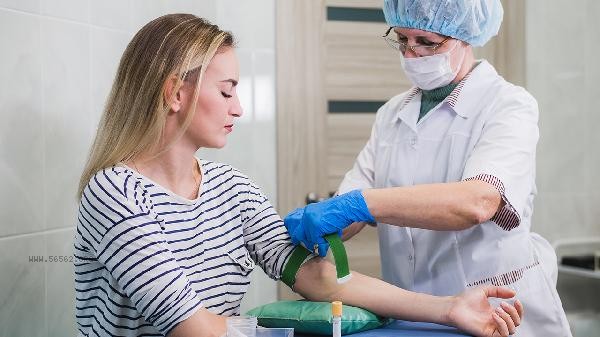The six tests for endocrine hormones must be completed through intravenous blood sampling. This examination mainly evaluates six indicators: follicle stimulating hormone, luteinizing hormone, prolactin, estradiol, progesterone, and testosterone. The blood collection time needs to be adjusted according to the menstrual cycle.

1. Examination items:
The six hormones include follicle stimulating hormone and luteinizing hormone secreted by the pituitary gland, estradiol and progesterone secreted by the ovaries, as well as prolactin and testosterone present in transgender individuals. Each indicator requires blood testing to obtain accurate values, and urine or saliva testing cannot meet clinical accuracy requirements.
2. Blood collection requirements:
3-5ml of venous blood should be collected on an empty stomach, and some hospitals require 30 minutes of sitting before blood collection. Prolactin testing is easily affected by stress, and blood collection should be avoided immediately after intense exercise. Luteinizing hormone has a pulsatile secretion characteristic, and if necessary, blood collection should be repeated every 15 minutes.
3. Cycle selection:

Blood collection on the 2nd to 4th day of the menstrual cycle can evaluate basal hormone levels, and ovulation monitoring should be accompanied by ultrasound examination. Progesterone testing should be performed during the luteal phase, and patients with amenorrhea can check at any time. There are significant differences in reference values between different physiological stages, and it is necessary for doctors to make clinical judgments.
4. Interference factors:
Oral contraceptives need to be tested after 3 months of discontinuation, and the impact of emergency contraceptives lasts for 1 month. Avoid vigorous exercise, staying up late, and high-fat diet one week before blood collection. Thyroid drugs and psychotropic drugs may interfere with prolactin results, and it is necessary to inform the doctor of medication history in advance.
5. Report interpretation:
Abnormal single indicators should be analyzed in conjunction with clinical manifestations, such as elevated follicle stimulating hormone accompanied by amenorrhea, which may indicate premature ovarian failure. Polycystic ovary syndrome often presents with synchronous elevation of luteinizing hormone and testosterone, and hyperprolactinemia should rule out the possibility of pituitary microadenoma.

Maintain a regular daily routine for 3 days before the examination, avoid sexual activity and breast stimulation. On the day of blood collection, wear loose clothing for easy operation and carry past examination reports for comparison and reference. Pregnant women are advised to have their thyroid function tested simultaneously, and obese patients should also have their insulin resistance related indicators tested. After receiving the report, an appointment should be made with a specialist for interpretation. Abnormal hormone levels often require 2-3 follow-up examinations for confirmation, and fluctuations in some indicators need to be comprehensively evaluated in conjunction with imaging examinations such as ultrasound. Daily attention should be paid to recording changes in the menstrual cycle. If there is sudden amenorrhea or abnormal bleeding, medical attention should be sought in a timely manner.








Comments (0)
Leave a Comment
No comments yet
Be the first to share your thoughts!